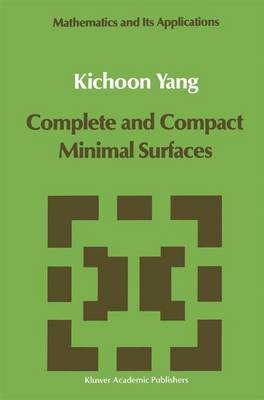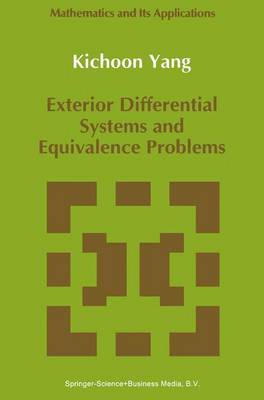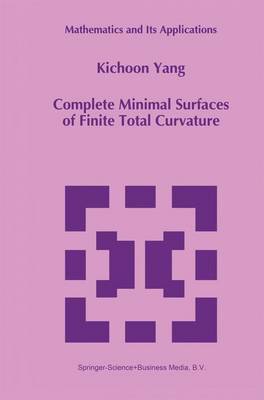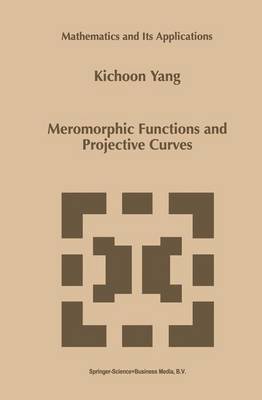Mathematics and Its Applications
4 primary works
Book 54
'Et moi, ..., si j'avait su comment en reveni.r, One service mathematics has rendered the je n'y serais point aile.' human race. It has put common sense back Jules Verne where it belongs. on the topmost shelf next to the dusty canister labelled 'discarded non- 111e series is divergent; therefore we may be sense'. Eric T. Bell able to do something with it. O. Heaviside Mathematics is a tool for thought. A highly necessary tool in a world where both feedback and non- linearities abound. Similarly, all kinds of parts of mathematics serve as tools for other parts and for other sciences. Applying a simple rewriting rule to the quote on the right above one finds such statements as: 'One service topology has rendered mathematical physics ...'; 'One service logic has rendered com- puter science ...'; 'One service category theory has rendered mathematics ...'. All arguably true. And all statements obtainable this way form part of the raison d'etre of this series.
Book 73
tEl moi, "0, si j'avait su comment en revenir, je One service mathematics has rendered the n 'y serais point aIle.' human race. It has put common sense back Jules Verne where it belongs, on the topmost shelf next to the dusty canister labelled 'discarded nonsense'. The series is divergent; therefore we may be Eric T. Bell able to do something with it. O. Heaviside Mathematics is a tool for thought A highly necessary tool in a world where both feedback and nonlinea- ties abound. Similarly, all kinds of parts of mathematics serve as tools for other parts and for other s- ences. Applying a simple rewriting rule to the quote on the right above one finds such statements as: 'One s- vice topology has rendered mathematical physics ...'; 'One service logic has rendered computer science ...'; 'One service category theory has rendered mathematics ...'. All arguably true. And all statements obtainable this way form part of the raison d'etre of this series.
Book 294
This monograph contains an exposition of the theory of minimal surfaces in Euclidean space, with an emphasis on complete minimal surfaces of finite total curvature. Our exposition is based upon the philosophy that the study of finite total curvature complete minimal surfaces in R3, in large measure, coincides with the study of meromorphic functions and linear series on compact Riemann sur faces. This philosophy is first indicated in the fundamental theorem of Chern and Osserman: A complete minimal surface M immersed in R3 is of finite total curvature if and only if M with its induced conformal structure is conformally equivalent to a compact Riemann surface Mg punctured at a finite set E of points and the tangential Gauss map extends to a holomorphic map Mg _ P2. Thus a finite total curvature complete minimal surface in R3 gives rise to a plane algebraic curve. Let Mg denote a fixed but otherwise arbitrary compact Riemann surface of genus g. A positive integer r is called a puncture number for Mg if Mg can be conformally immersed into R3 as a complete finite total curvature minimal surface with exactly r punctures; the set of all puncture numbers for Mg is denoted by P (M ). For example, Jorge and Meeks [JM] showed, by constructing an example g for each r, that every positive integer r is a puncture number for the Riemann surface pl.
Book 464
This book contains an exposition of the theory of meromorphic functions and linear series on a compact Riemann surface. Thus the main subject matter consists of holomorphic maps from a compact Riemann surface to complex projective space. Our emphasis is on families of meromorphic functions and holomorphic curves. Our approach is more geometric than algebraic along the lines of [Griffiths-Harrisl]. AIso, we have relied on the books [Namba] and [Arbarello-Cornalba-Griffiths-Harris] to agreat exten- nearly every result in Chapters 1 through 4 can be found in the union of these two books. Our primary motivation was to understand the totality of meromorphic functions on an algebraic curve. Though this is a classical subject and much is known about meromorphic functions, we felt that an accessible exposition was lacking in the current literature. Thus our book can be thought of as a modest effort to expose parts of the known theory of meromorphic functions and holomorphic curves with a geometric bent. We have tried to make the book self-contained and concise which meant that several major proofs not essential to further development of the theory had to be omitted. The book is targeted at the non-expert who wishes to leam enough about meromorphic functions and holomorphic curves so that helshe will be able to apply the results in hislher own research. For example, a differential geometer working in minimal surface theory may want to tind out more about the distribution pattern of poles and zeros of a meromorphic function.



